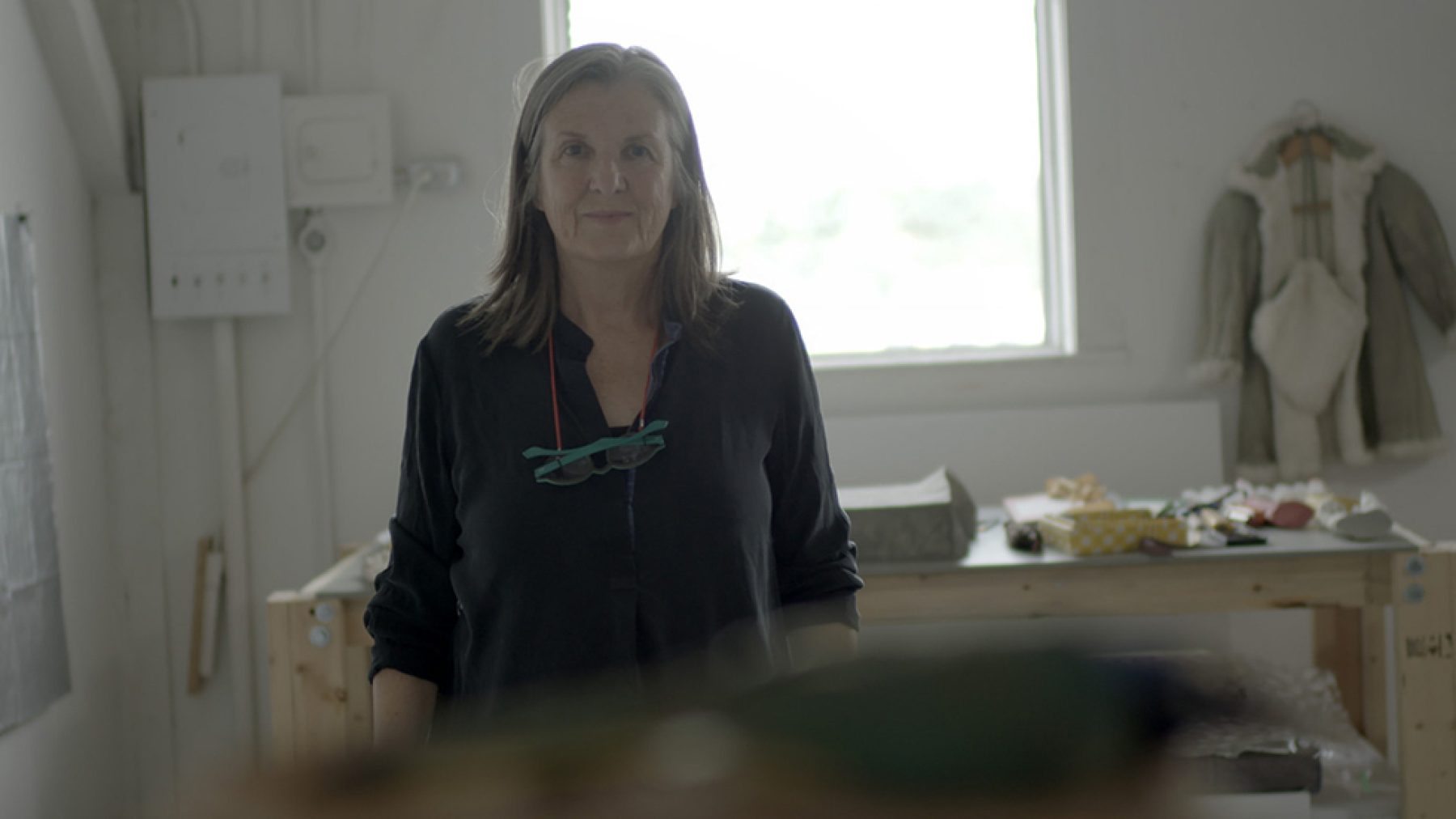This exhibition was on view from January 31 to March 24, 2019.
Liz Magor: BLOWOUT
Featuring a newly commissioned body of work, Liz Magor: BLOWOUT will be the Canadian artist’s first East Coast institutional solo exhibition. Co-organized by the Carpenter Center and the Renaissance Society, the exhibition will first be on view in Cambridge and then travel to the Chicago (April 27–June 23, 2019). Liz Magor’s (b. 1948) sculpture quietly dramatizes the relationships that develop between objects. Often playing soft against hard, she pairs care with exposure. Adhering to exacting processes of casting, fabrication, and hand-made techniques, Magor raises questions around gender roles, memory, addiction, and the changing value of the objects that come in and out of our lives. Furniture, used textiles (blankets, upholstery, clothing), accessories like gloves and stockings, and plastic and paper packaging all play important roles in her work. Rendered in confounding combinations of sculpture techniques, these soft, pliable elements comingle with liquor bottles, cigarettes, and food, forces that shape our social and domestic lives. Each artwork conjures broad social histories, and is driven by intimate, contingent relationships of power and vulnerability.
Magor’s new body of work, commissioned by the Carpenter Center and Renaissance Society, represents a critical juncture in artist’s practice. During a recent residency in Berlin, Magor began experimenting with a clear, stiff yet flexible Mylar material which is cut, folded, and tabbed to create transparent commercial packaging for stuffed animals and other toys. Magor has pushed the qualities and capacities of this material, and introduced other charged sculptural “agents,” to explore conditions of weakness and strength, agency, and the slow deteriorations that take place, almost unnoticed, over long periods of time.
A publication—the artist’s first US catalog in 15 years—will record this new work alongside newly commissioned texts by the exhibition’s curators and other writers.
Liz Magor: BLOWOUT is co-organized by the Carpenter Center for the Visual Arts at Harvard University and the Renaissance Society at the University of Chicago, and is co-curated by Dan Byers, John R. and Barbara Robinson Family Director of the Carpenter Center, and Solveig Øvstebø, Executive Director and Chief Curator of the Renaissance Society at the University of Chicago.
Liz Magor lives and works in Vancouver. In 2017, her work was the subject of traveling survey at the Kunstverein in Hamburg, Migros Museum, Zurich, and MAMAC, Nice. Other recent solo exhibitions of her work include: Centre d’art contemporain d’Ivry - le Crédac, Paris (2016), Musée d’art Contemporain de Montréal, Montreal (2016), the Art Gallery of Ontario, Toronto (2015), Peep-hole, Milan (2015), Presentation House Gallery, Vancouver (2014), and Triangle France, Marseilles (2013). In addition, she has had solo exhibitions at Henry Art Gallery, Seattle (2008), the Power Plant, Toronto (2003) and the Vancouver Art Gallery (2002). Magor participated in Documenta 8, Kassel (1987), and the 41st Venice Biennale, Venice (1984).
Download
Gallery Guide
Selected Press
Exhibiton support is given by the Henry Moore Foundation and the Canada Program, Weatherhead Center for International Affairs, Harvard University.


Liz Magor: BLOWOUT
$35.00
In 2018, the Carpenter Center for the Visual Arts and Renaissance Society at the University of Chicago co-organized an exhibition of a newly commissioned body of work by the Canadian artist Liz Magor. The accompanying publication, Liz Magor: BLOWOUT, is the artist’s first US catalog in ten years, and it features thorough photographic documentation of the new work, commissioned texts by Sheila Heti and Mitch Speed, and a conversation between the artist and curators Dan Byers and Solveig Øvstebø.
For more than four decades, Liz Magor’s practice has quietly dramatized the relationships that develop among objects, and she describes this body of work as “a collection of tiny and intense narratives.” Each written contribution responds in its own way to Magor’s new installations, which feature altered stuffed toys, bits of paper, and rat skins—sculptural “agents”—suspended in transparent Mylar box forms, and thirty pairs of secondhand shoes each displayed within its own box amidst elaborate embellishments.
Archive
Explore more of our rich history through our archive.

